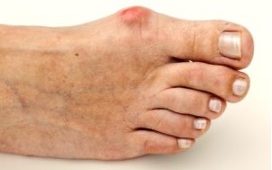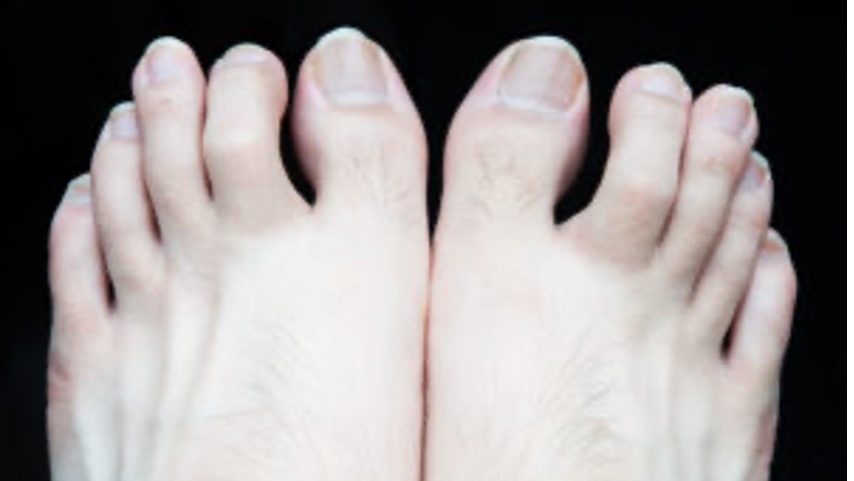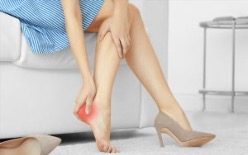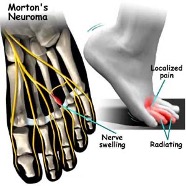
Men’s and women’s feet are naturally different. It’s the reason that you see noticeable differences in men’s and women’s shoe sizing and fit – leading shoe manufacturers are taking much more than just style into consideration in their designs, it is now commonplace to consider both structural differences like foot width, arch height, toe height and natural flexibility – as well as functional differences like the tendency to pound the pavement during running.
While understanding the gender differences relating to the feet can help ensure a comfortable shoe fit, as podiatrists, this information also offers us important insights into a person’s unique risk factors for foot problems or injuries, while helping us determine the best tailored approach to treatment, future injury prevention, and the home care advice that we offer to our patients.
To give an insight into the role of gender differences in foot problems, here’s a look into five common foot problems that our podiatrists see in our clinics, why they occur, and what you can do to treat them.
Bunions
A bunion is the prominent bony bump on the inside of the foot, by the big toe joint. While bunions are not inherently painful, they can become tender when shoes rub against them, corns or calluses develop on them, or if the way you walk means you are putting excess pressure over the big toe joint, leading to pain, swelling or redness.

Regularly wearing ‘fashion’ shoe styles that may be high heeled, tight or narrow and hence push against the sides of the feet is a common cause of bunions, and one that we tend to see more of in women than men. For men, who also commonly develop bunions, the common cause we see is due to their inherited foot posture and foot function. Having flat (pronated) feet means that a person can spend more time rolling on the inside of their foot, and more pressure over the big toe joint with every step, which can affect the stability of the tendons in the area and therefore make them more prone to bunions.
Along with bunions, both genders may also develop another bunion on the opposite side of their foot by the little toe called a tailor’s bunions.
Hammertoes
A hammertoe is the name given to a toe that bends downwards around the middle or the end of the toe instead of remaining straight, resembling the shape of a hammer. You may notice that the joints that make up the toes are growing less flexible and more fixed in the hammertoe position – or in the ‘claw toe’ position where the toe joints bend downwards to begin to form more of a ‘C’ clawed shape.

While we see more hammertoes in women from the tendency to wear shoes that are too small, tight or high heeled, which cramps the toes in a fixed position, men have the same problem – often from cramming their feet into tight sports shoes like footy boots, and then forcefully driving their feet into the ground through training and throughout sports games. The same can be said for men’s business shoes that have a sleek aesthetic with a narrow toe box.
For both male and female genders, opting for shoe choices that are unsupportive can cause the toes to regularly and forcibly grip the shoe to help maintain stability and control, which can contribute to hammertoes – and as can muscle imbalances in the forefoot.
Plantar Fasciitis Heel Pain
Plantar fasciitis is a common source of heel pain that often starts first thing in the morning, when standing to get out of bed. The pain can settle after some movement, but may recur when standing after rest. As the problem worsens, the pain may last all day. It is caused by damage to a tissue called the plantar fascia that starts at the bottom of the foot and fans out across the arch to attach to all five toes.

One common cause of plantar fasciitis that we see in greater volumes among women is a naturally flatter foot posture from having more flexible ligaments and tissues, which can add more day-to-day strain to the plantar fascia. We also see cases of plantar fasciitis in women that spend long periods of time on their feet such as retail workers. For men in other roles that require long periods of time on the feet like working as a tradie or in the military, a reduced incidence may be explained by specific work uniform requirements that include good, supportive footwear – which is often absent from retail roles.
For men, a key cause of plantar fasciitis that we see in higher volumes than in women is the tendency to go too hard, too fast in their return to exercise following periods of rest, whether that’s from a holiday, the Christmas break, or a period of illness. Our muscles and tissues grow weaker and less flexible in the absence of use, so when returning after time off, we must follow a gradual return-to-sport program, instead of picking up where we left. Examining the results of a questionnaire looking at the differences in the self-reported quality of life between men and women with plantar fasciitis, men were found to be less likely to seek specific consultations for their plantar fasciitis, and had a lower demand for treatment. This may indicate a tendency for men to shrug off initials aches or symptoms indicating damage to the plantar fascia, waiting until the injury has worsened and taken hold to seek rehabilitative care, missing out on potential rehabilitative strategies during the early signs that could prevent a mild tissue irritation from turning into significant damage to the plantar fascia.
Ankle Sprains
Ankle sprains occur when the ankle suddenly twists and strains the ligaments that are designed to support the ankle and keep it stable. This can be incredibly painful, and when not rehabilitated properly, can lead to ongoing ankle instability.
Studies show that women’s ankles are naturally more flexible than men’s, meaning that the ankle may be allowed to roll out further before the ankle ligaments ‘kick in’ to support and stabilise.

A wider pelvis can also alter the alignment of the knee and ankle which may contribute to sprains, as can wearing shoes that are less stable and supportive such as high heels.
For men, research shows a higher incidence of high and inner ankle sprains than women. Men playing sports at a collegiate level were 3.5 times more likely to have inner ankle sprains, likely being related to participating in high-impact activities. A higher muscle bulk could have also contributed to these results, with the BMI found to be higher in the men who sustained either inner or high ankle sprains.
Morton’s Neuroma
A neuroma can feel like a hard, painful pebble between the long bones of your feet – often between the third and fourth toes. It develops when the lining of a nerve that runs between your toes is inflamed, pressing on the surrounding structures and causing pain. This occurs from overloading the forefoot, whether that’s mechanically or with footwear.

Neuromas can develop when the feet are crammed into tight shoes or high enclosed heels, which forces the bones together and pinches or compresses a nerve. This is observed both in men with business shoes and tight sports shoes, as well as narrow fashion shoes worn by many women. A study comparing the male and female foot shapes suggested that feet in males are inherently stronger and longer than an average female with an otherwise similar demographic profile. With women’s feet being more likely to be inherently higher and narrower, this may naturally expose the metatarsal bones to more pressure on a daily basis, which over time may accumulate to contribute to the development of a neuroma.
Gender Differences Exist In Leg Problems, Too
Alongside gender differences having an increased likelihood of problems affecting the feet, the same applies to certain conditions affecting the legs. A common example is the anterior cruciate ligament (ACL), where statistics show that women are two to ten times more likely to experience an ACL tear than men. This has been linked to differences in the anatomy of the knee, having wider hips, increased flexibility, and hormonal factors, particularly at different times of a woman’s cycle.
Treating Men’s And Women’s Foot And Leg Problems
Our podiatrists offer a range of treatment solutions specific to the condition and pain you’re experiencing for both men and women. While having these treatments is fantastic for helping get the best outcomes for our patients, we leverage the unique differences and risk factors between men and women in our care for you, acknowledging and applying these differences when assessing, diagnosing, understanding the cause of an injury, and creating a treatment plan. To care for your injury or problem, we may use:
- Specific footwear advice or modifications to ensure your shoes are promoting your foot health instead of contributing to the problem
- Custom foot orthotics to adjust the way the foot moves and functions to relieve pressure from specific areas like the big toe for a bunion, or a neuroma
- Skin and nail care to remove painful corns or callus
- Shockwave therapy to help repair injuries like plantar fasciitis heel pain
- Strapping, padding, bracing or splinting – such as bunion splinting or plantar fasciitis splinting to help relieve some heel pain
To book your appointment with our experienced podiatry team, call us on 1800 FOOT DR or book online here.
References
[1] https://www.ncbi.nlm.nih.gov/pmc/articles/PMC5931202/
[2] https://www.ncbi.nlm.nih.gov/pmc/articles/PMC1888743/
[3] https://journals.sagepub.com/doi/abs/10.1177/0363546510391462
[4] https://pubmed.ncbi.nlm.nih.gov/19767544/


